On a long and narrow plot fronting a road junction, a semi-detached house of three and a half storey stands as a slim, monolithic mass. With minimal external views, the design aims to provide the avid gardening homeowners and their newlywed children with a climate-conscious and a unique inward-looking home.
In crafting a multi-generational home, the design strives to avoid the formation of wholly segregated private zones. Instead, it aims to create a shared space where chance encounters and a sense of connectedness can flourish.
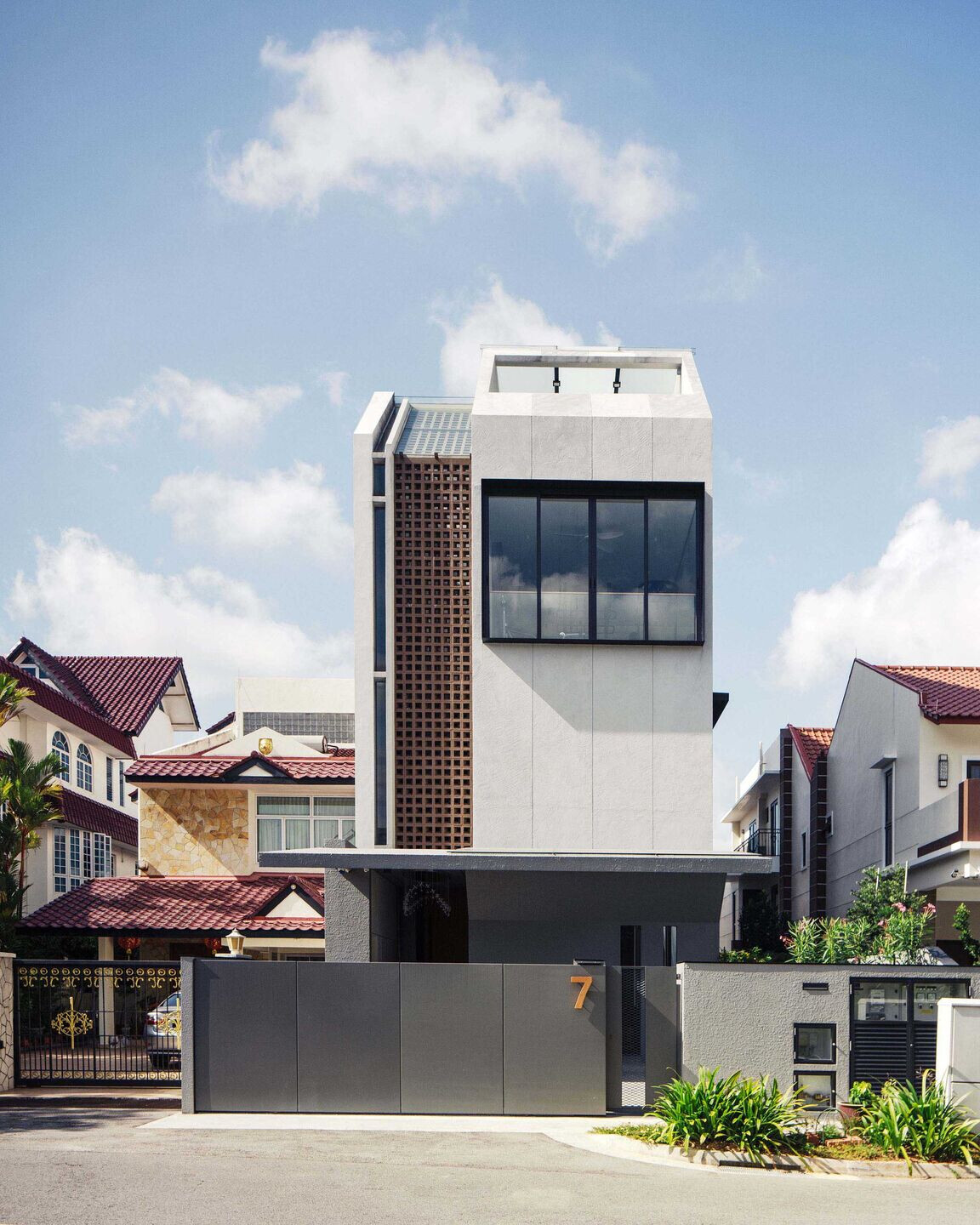
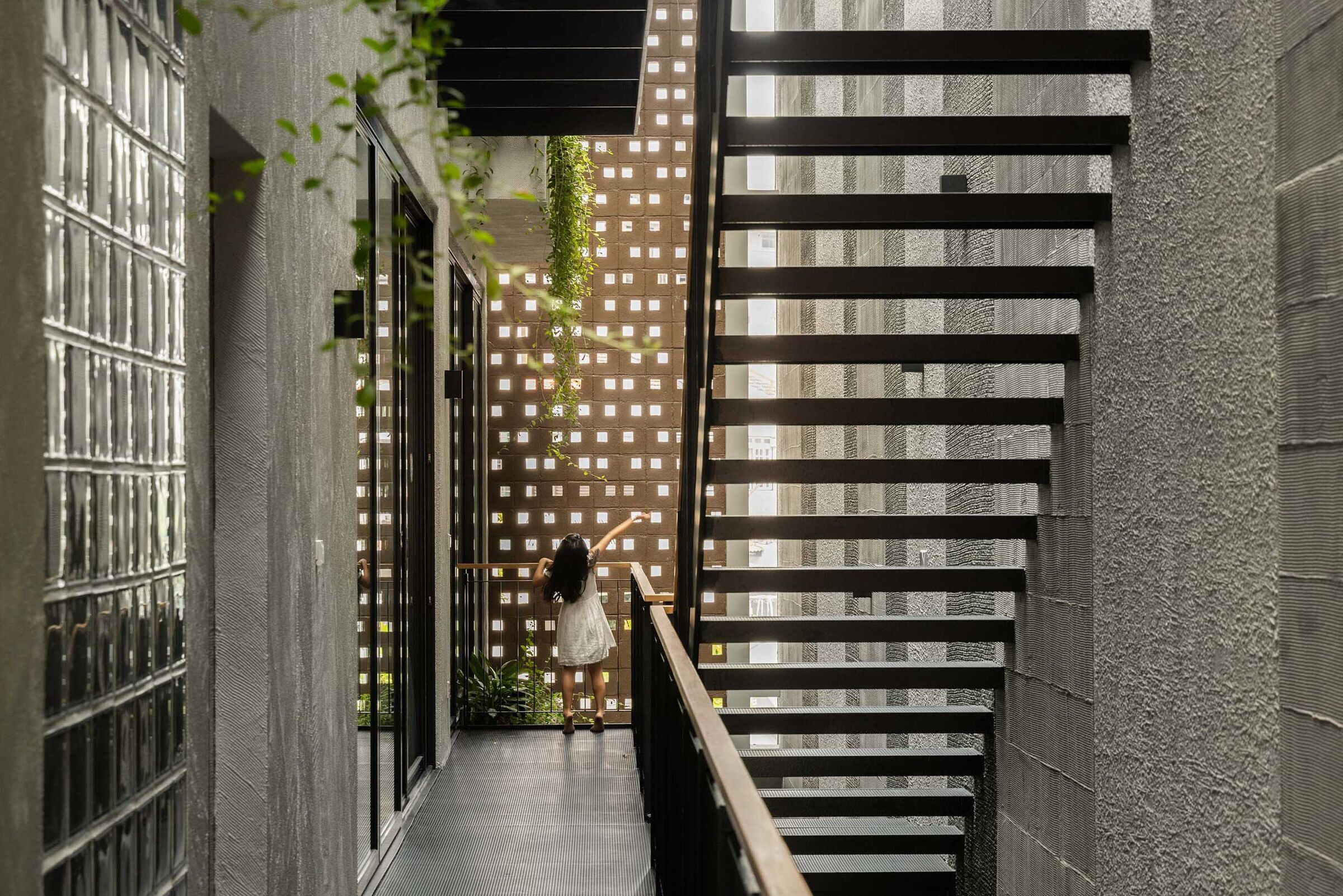
Serving as main artery of the house is a soaring, quadruple-volume atrium. Capitalizing on its north-south orientation, the atrium is book-ended by concrete breeze blocks, permitting cross-ventilation throughout the year. Tapered profiled breeze blocks were selected to maximize the wind-tunnel effect and serve as a bioclimatic facade, filtering daylight and rain. Completing the biophilic experience of this feature space is a series of deep framed skylight overhead and the integration of lush greenery across levels.

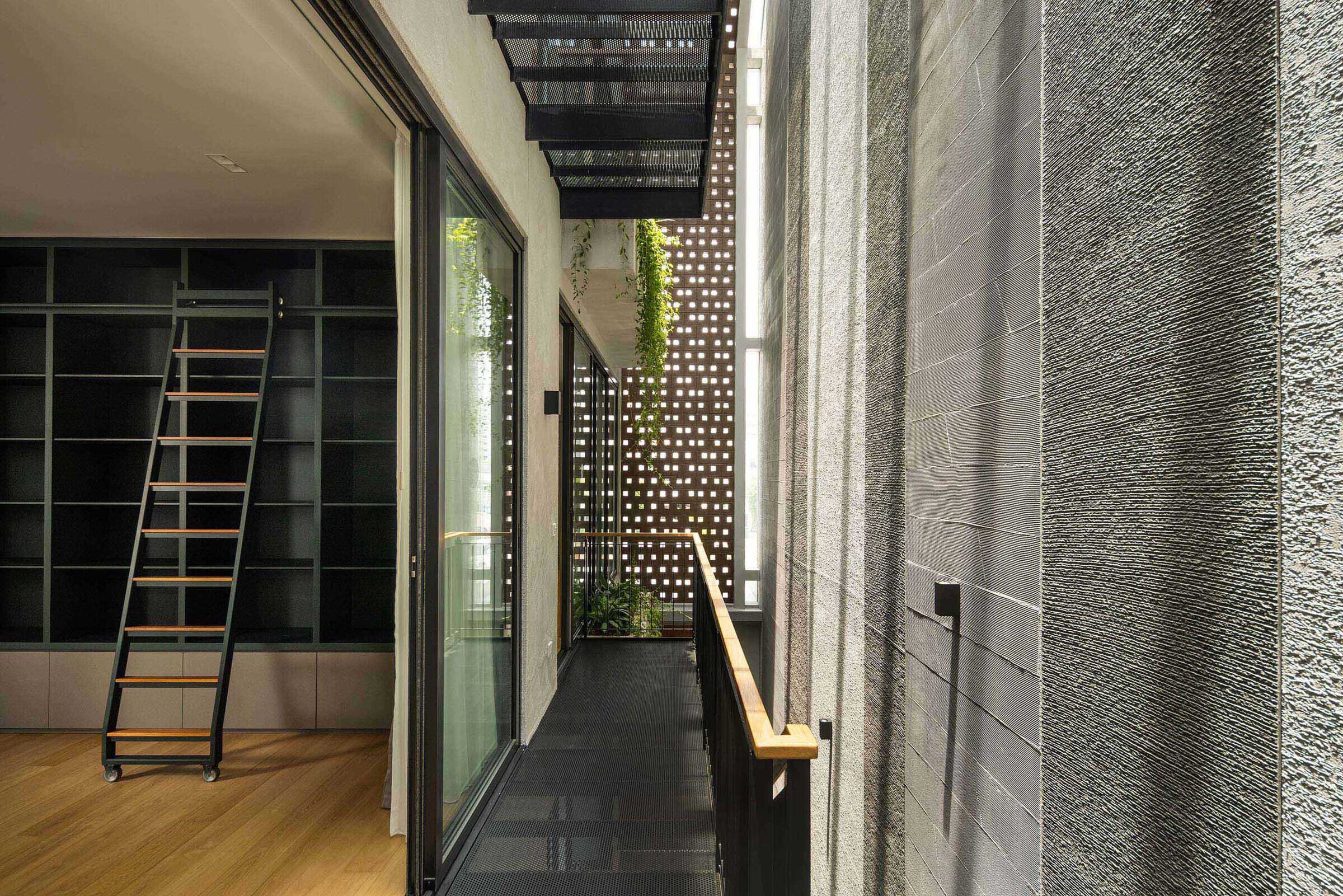
The enjoyment of the external elements is not exclusive to the atrium and extends to the rest of the living spaces. With each storey occupied by individual family units, the atrium aims to facilitate everyday interactions by doubling as an open and shared circulation space. For this, a perforated metal mesh staircase is designed as a continuous element that traverses along the internal elevation of the house and leads right to the top. With full-height sliding glass lining the interior atrium wall, visual connections and cross-ventilation into the living spaces are further established.
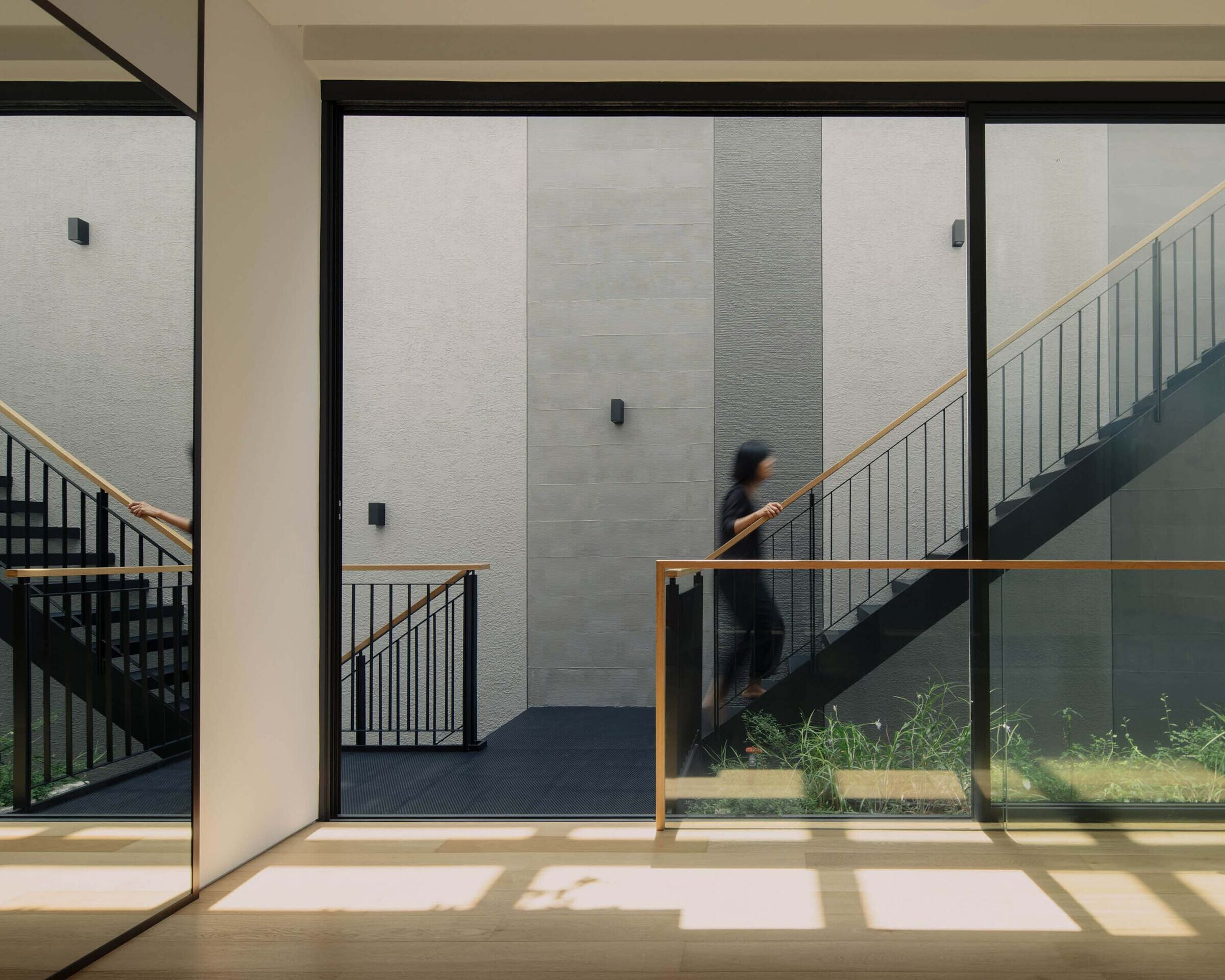

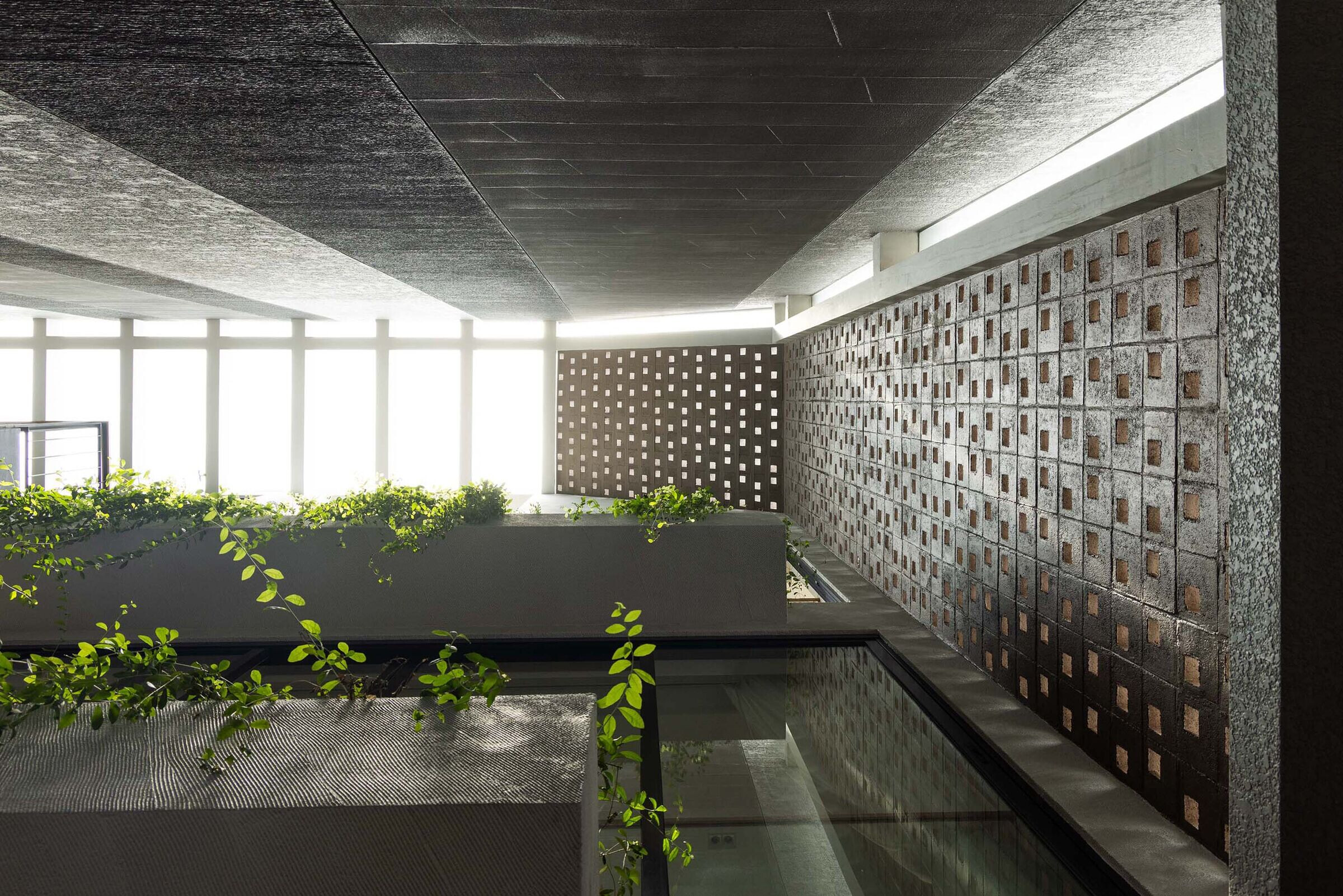
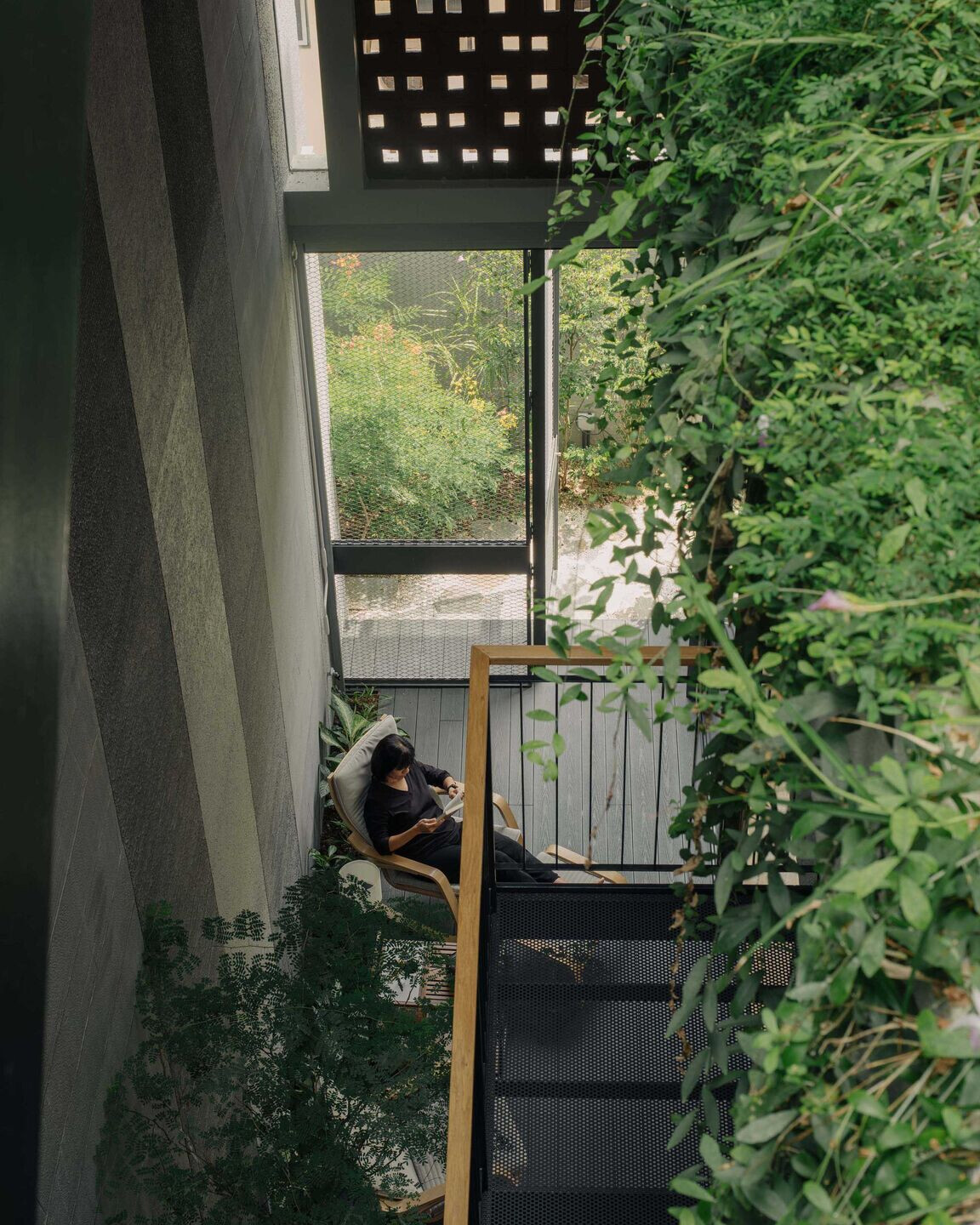
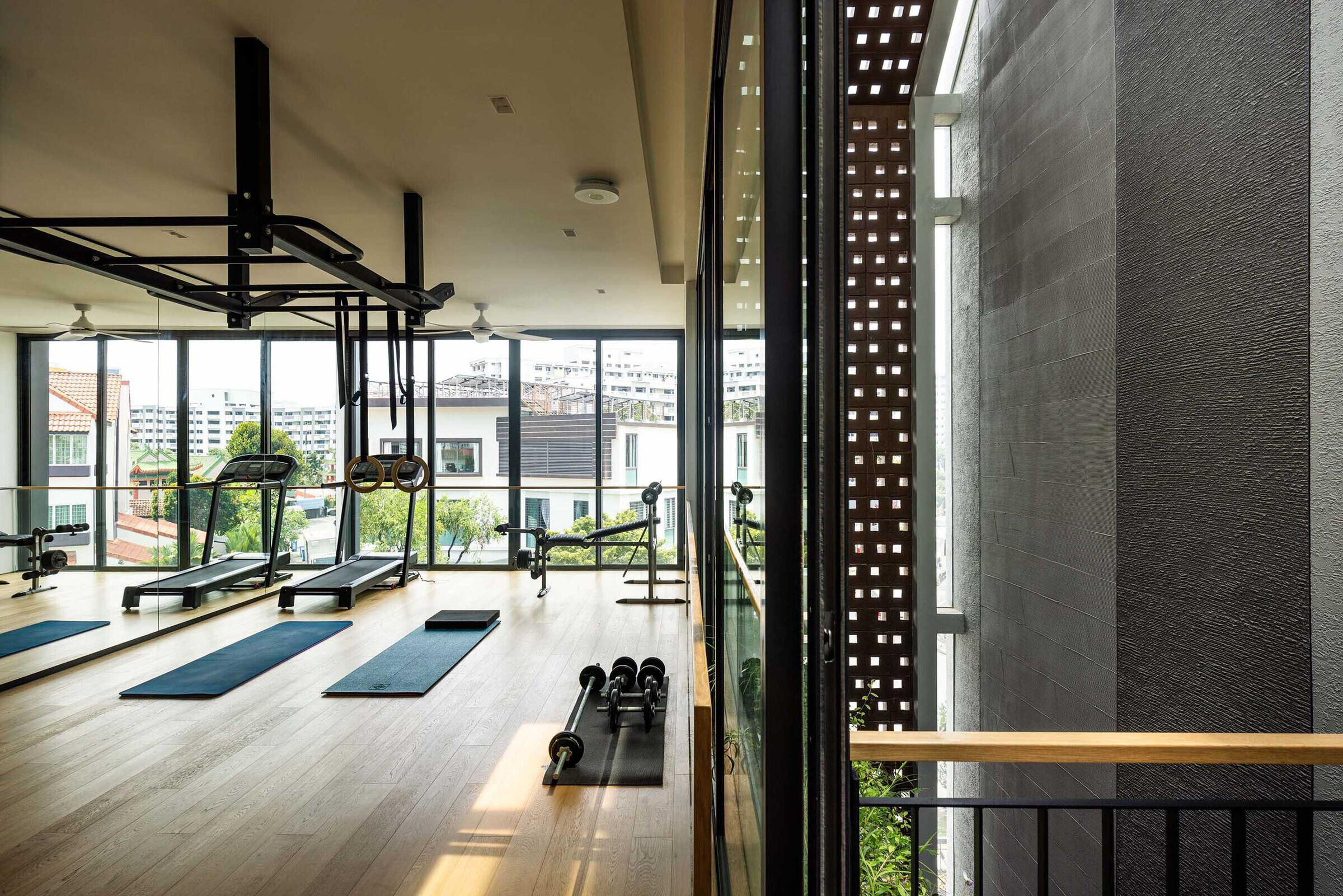
Sustainable elements are sensitively integrated, with solar panels lining the roof and walnut chips repurposed from construction remnants being embedded within the microcement tea room flooring.

Ultimately, the house aims to be a tropical shared space where multiple generations can grow together for many years to come.





























